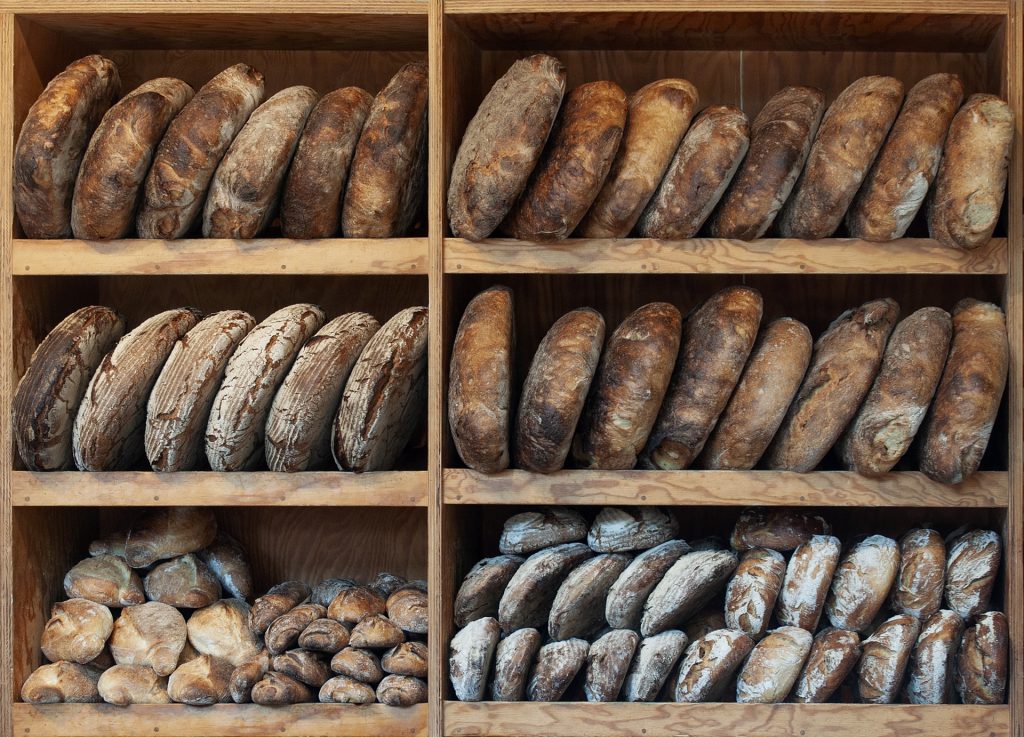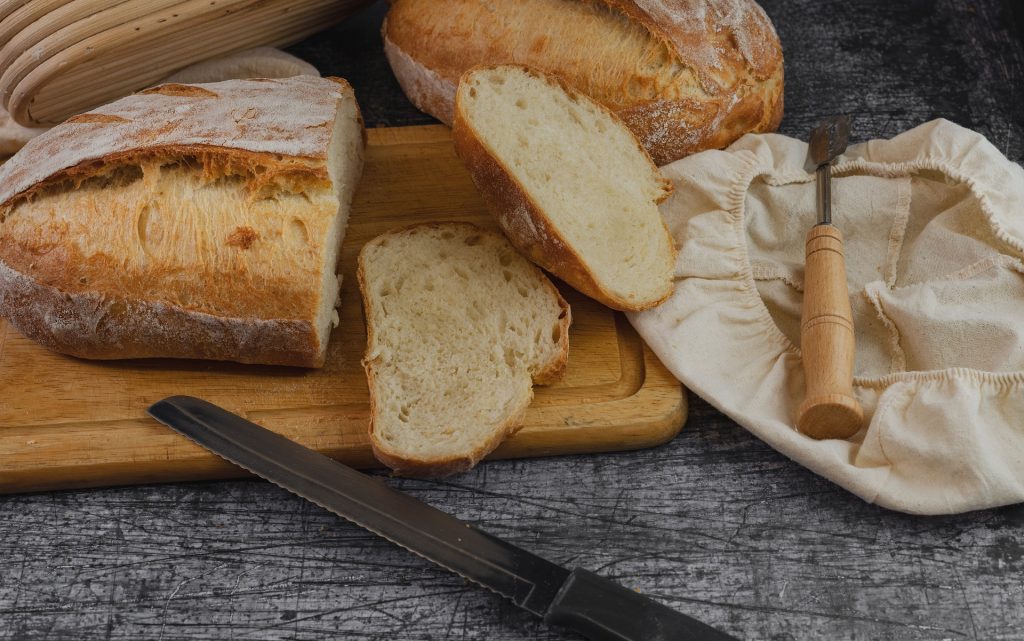
Best Artisanal Bread Storage Solutions: How to Keep Your Bread Fresh Longer
Artisanal bread, with its rich flavors, unique textures, and traditional baking methods, has become a beloved staple for bread enthusiasts around the world. Unlike mass-produced bread, artisanal loaves are often made with high-quality ingredients, handcrafting techniques, and a slow fermentation process. This dedication to quality and craftsmanship results in bread with distinctive flavors, chewy crumbs, and crisp, golden crusts that are hard to beat.
However, these qualities make proper storage crucial to preserving the bread’s freshness and flavor. Without proper storage, even the finest artisanal loaf can lose its texture and taste within a few days. The challenge is finding the right balance: too much moisture can lead to mold, while too little can cause the bread to dry out and become stale quickly.
Storing artisanal bread effectively requires understanding its unique needs and addressing these challenges to ensure that each slice retains its original deliciousness.
Why Proper Storage of Artisanal Bread Matters
Preserving Freshness and Flavor
Improper storage of artisanal bread can lead to staleness or mold growth. When bread is stored in environments that trap moisture, such as plastic bags, it creates the perfect conditions for mold to develop. On the other hand, storing bread in too dry or overly ventilated spaces can cause it to lose its freshness quickly, turning it dry and crumbly. The science behind bread’s shelf life revolves around the balance of moisture content. Bread naturally contains water, and without proper storage, this moisture can either evaporate too quickly or remain trapped, promoting microbial growth. Proper storage preserves the bread’s flavor and extends its shelf life, allowing you to enjoy its peak taste for longer.
Maintaining Texture and Crust Quality
The texture of artisanal bread is one of its most celebrated features, and storage plays a crucial role in maintaining this texture. If bread is stored improperly, it can lose its desired softness or become overly dry. Too much humidity can soften the crust, while too little moisture can cause the bread to become too tough. The crust, in particular, is a point of pride for many artisanal bread enthusiasts; it provides a satisfying crunch that contrasts beautifully with the soft interior. Storing bread in the right conditions—whether in a breathable bag or box—helps maintain that perfect balance of crust and crumb, ensuring a delightful experience with every bite.

Common Mistakes in Storing Artisanal Bread
Storing Bread in Plastic Bags
One of the most common mistakes when storing artisanal bread is using plastic bags. While plastic bags are often used for convenience, they trap moisture inside, which can lead to a soggy loaf. Artisanal bread needs to breathe to retain its crispness and texture, and plastic prevents this natural airflow. The trapped moisture encourages mold growth, causing the bread to spoil faster. For long-lasting freshness, it’s better to store bread in a breathable material, such as linen or paper, which helps maintain the ideal moisture balance.
Refrigerating Bread
Many people mistakenly refrigerate bread to extend its shelf life, but this can have a negative impact on both texture and flavor. When bread is stored in the fridge, the starches in the bread begin to crystallize at a faster rate, which leads to a dry, hard texture. The cold also dulls the flavors, making the bread taste stale even when it’s freshly baked. While refrigeration might be necessary for bread with preservatives or for longer storage periods, artisanal bread is best kept at room temperature or frozen for extended storage to preserve its taste and texture.
Using Non-breathable Containers
Another mistake is storing artisanal bread in non-breathable containers, such as sealed plastic boxes or airtight jars. These containers trap moisture inside the bread, creating an environment that leads to condensation, which can soften the crust and encourage mold growth. Bread requires airflow to remain fresh and retain its ideal texture. Containers like wooden bread boxes, cloth bags, or paper bags allow for this airflow while still providing some protection from environmental factors like dust or insects. Proper ventilation is key to maintaining the integrity of artisanal bread.
Best Artisanal Bread Storage Solutions
Bread Boxes
One of the most effective ways to store artisanal bread is by using a bread box. Wooden or ceramic bread boxes provide an ideal environment for bread, balancing ventilation and protection. The porous nature of wood allows for air circulation, preventing moisture buildup, which helps maintain the bread’s texture and prevents mold. Ceramic bread boxes are similarly effective, offering a controlled environment that shields the bread from humidity while still allowing some airflow. When choosing a bread box, consider the size of your bread, the material’s ability to wick away moisture, and whether the design fits with your kitchen’s aesthetic. A good bread box will protect your loaf from drying out and preserve its freshness for several days.
Linen or Cotton Bread Bags
Linen or cotton bread bags are a fantastic option for keeping artisanal bread fresh. These fabrics are breathable, which allows air to circulate and maintain the correct moisture balance. Unlike plastic, linen and cotton help prevent the bread from becoming too soggy or too dry. The soft, breathable nature of these materials also prevents the crust from becoming too hard. You can purchase high-quality linen or cotton bread bags from specialty kitchen stores or online retailers. Alternatively, if you’re handy with sewing, making your own bread bag is simple and a great way to personalize your bread storage. Look for fabric that allows air circulation but also protects from dust or debris.
Paper Bags and Towels
For short-term storage, paper bags can be an effective solution, especially when paired with a towel. Paper bags allow the bread to breathe while still providing some protection from the elements. A clean towel can be wrapped around the bread before placing it in the paper bag, offering an extra layer of protection from drying out. The towel absorbs excess moisture, keeping the bread from becoming too soggy while preserving its softness. This method is best for bread that will be consumed within a few days. It’s a simple, inexpensive way to store your artisanal bread without compromising its quality.
Freezing Artisanal Bread
When you have extra artisanal bread that you can’t finish in a few days, freezing it is a great option. Freezing bread allows you to preserve its flavor and texture for longer periods without compromising its quality. To freeze artisanal bread, wrap it tightly in wax paper or parchment paper, followed by a layer of plastic wrap or foil to prevent freezer burn. When ready to enjoy, remove only the slices you need and allow them to thaw at room temperature. To bring back some of the crust’s crispiness, you can place the bread in a hot oven for a few minutes after it has thawed. This method ensures that the bread retains its flavor and texture without turning stale.
How to Tell if Artisanal Bread Has Gone Bad
Signs of Staleness
As artisanal bread ages, it can lose its appealing texture and flavor. One of the first signs of staleness is a crumbly texture, where the bread becomes dry and difficult to tear or cut. The interior of the bread may feel overly firm and dry, making it less enjoyable to eat. The flavor also diminishes as the bread loses its natural freshness, becoming bland or cardboard-like. When you notice a dry, overly firm feel or a lack of flavor, it’s a clear sign that the bread is past its prime and has become stale. While staleness isn’t necessarily harmful, it certainly detracts from the quality that makes artisanal bread so special.
Signs of Mold
Mold growth is another indicator that your artisanal bread has gone bad. Mold can appear as green, blue, or white spots on the surface, typically in the crevices of the loaf or where the bread has been sliced. Mold thrives in warm, moist environments, so if the bread has been stored in a humid or airtight container, it’s more likely to develop mold. To prevent mold growth, ensure that the bread is stored in a dry, well-ventilated space, and avoid sealing it in plastic bags or non-breathable containers. If you see any signs of mold, it’s best to discard the entire loaf, as mold can spread rapidly through the bread.
Tips for Extending the Shelf Life of Artisanal Bread
Regular Rotation and Consumption
One of the easiest ways to extend the shelf life of artisanal bread is through regular rotation and consumption. Bread is best enjoyed fresh, but when buying in larger quantities or baking at home, it’s essential to consume it before it has time to go stale. By keeping track of when you purchase or bake the bread, you can prioritize consuming the older loaves first. This will help prevent waste and ensure you’re always enjoying your bread at its freshest. If you can’t consume it in time, freezing bread is a great way to preserve it for later.
Proper Slicing Techniques
How you slice artisanal bread can also impact its freshness. If you slice the entire loaf at once, you expose the interior to air, which leads to quicker staleness. Instead, slice only what you plan to eat in the immediate future, keeping the rest of the loaf intact. If you’re storing a loaf for an extended period, you can freeze it in slices to avoid wasting the whole loaf and ensure that each slice stays as fresh as possible. When slicing, use a serrated knife to make clean cuts without compressing the bread, which helps preserve its texture.

Creating the Ideal Storage Environment
The right storage environment plays a critical role in keeping artisanal bread fresh. Ideally, bread should be stored at room temperature, away from direct sunlight or heat, in a space with moderate humidity. Too much heat can cause the bread to dry out, while excessive moisture can lead to mold. Airflow is also essential: storing bread in breathable containers like linen or cotton bags ensures that the bread remains fresh without becoming too moist. For longer-term storage, freezing bread is the best option, as it preserves both flavor and texture when thawed properly. Aim to create a stable, cool environment with optimal airflow to extend the life of your artisanal bread.
Conclusion
In conclusion, keeping artisanal bread fresh requires attention to the details of its storage. To maintain the bread’s flavor, texture, and crust quality, avoid common mistakes like using plastic bags or refrigerating the bread. Instead, opt for breathable storage solutions such as wooden or ceramic bread boxes, linen or cotton bread bags, and paper bags with towels for short-term storage. Freezing is an excellent option for preserving bread without sacrificing taste and texture.
By following these best practices and understanding how environmental factors like temperature, humidity, and airflow affect your bread, you can enjoy the full experience of artisanal bread for days after it’s baked. Regular rotation, proper slicing, and the right storage environment all contribute to extending its shelf life and keeping your bread as delicious as the day it was made.
Ultimately, the right storage solutions help you preserve the quality and flavor of your artisanal bread, ensuring that every slice remains as fresh and delightful as possible. You can read more article from here.








Add comment